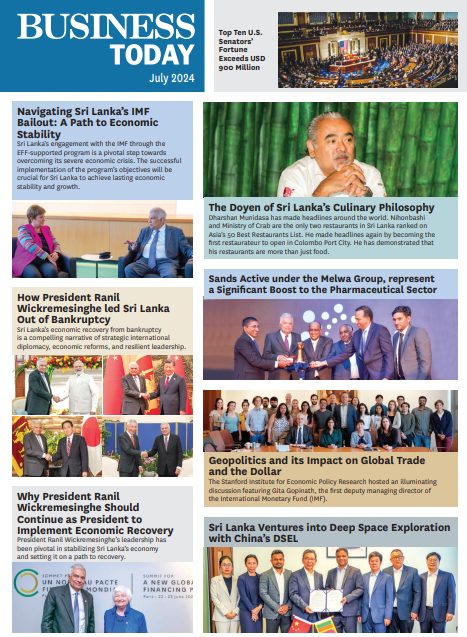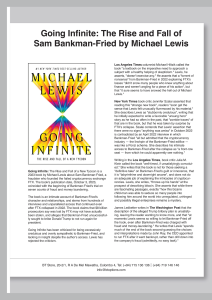
Marketing is likely to play a critical role in meeting the challenge that the garment industry will face, once the quota system is removed from the year 2005, says J Godwin Perera.
The garment industry occupies a very significant position in Sri Lanka’s economy. Over the last 10 years it has grown rapidly as a leader in the export sector. The other reason for its importance is its capacity to generate employment. It is estimated that the number directly employed in the industry is around 200,000 Most of these are females who would, if not for the garment industry, be outside the productive la bour force of this country. The growth and success of this industry can be attributed to many causes such as the support given by the government (both previous and present), the policies of liberalization, comparatively lower labour costs and the inherent intelligence and skill of our workers. But underpinning all these has been the availability of quotas by which Sri Lanka is given an assured market in the USA and the European Union for certain popular categories of garments. This quota system, which is part of the Multi Fibre Agreement, will be phased out by the year 2005. According to the existing structure of the quota system as it applies to Sri Lanka, the phasing out will be rather abrupt. Significant lots of quotas will be available up to the year 2004 and almost overnight, with the dawn of 2005, the quotas will be removed. Sri Lanka will then face the challenge of having to compete with countries such as China, India, Pakistan, Vietnam, Bangladesh, Myanmar and some of the countries of Eastern Europe. As far as these countries are concerned, the playing field will be level. However a more serious threat comes from the Less Developed Countries of the European Union and the Less Developed Countries within North Asia Free Trade Arrangement (NAFTA).
2005 and beyond
How then can Sri Lanka prepare itself for this challenge? The key to survival and success will be for the Sri Lankan Garment Industry to start from now a process of matching its human, physical and financial resources with the requirements of its target markets.
To do this, the starting point is to visualize and understand the scenario of the International Garment Industry by the year 2005. The most likely scenario is:
1. Long Term Relationships
Most reputable buyers will be looking for reliable, long term relationships with manufacturers. There will be footloose buyers moving from country to country but these will be bargain seekers of the lower-end of the market, whose need is low price – low quality.
2. Lead Times Lead times will be shorter. Currently the average lead time is between 90 to 120 days, but buyers will in the future be allowing around 60 to 90 days, with the trend being closer to 60 than 90.
3. Working Conditions Quality of labour and working conditions will be carefully appraised by buyers. For instance, buyers will keep away from factories and even countries where child labour is used, where there is exploitation of women and where there is an unfavourable working environment. In fact it is possible that importing countries of the West will demand guarantees that these anti-social conditions are not prevalent. It wouldn’t be surprising if the term “worker-friendly factory” does not become a standard phrase to be used on labels, similar to the phrase ‘environmental-friendly’ or ‘eco-friendly”.
Here again, one begins to wonder whether the developed countries are genuinely concerned about the age and gender of workers and conditions of work in the factories of the third world countries or whether this is yet another form of subtle protectionism.
4. Safe convenient access Buyers will demand that access to the offices and factories of manufacturers be safe, quick, convenient and comfortable.
It is unfortunate that today most of our country roads are in a deplorable state and not at all conducive to fast travel. At times, the travelling time from the buyer’s country to Sri Lanka is less than the travelling time from Colombo to the factory.
The threat of bomb attacks has kept away not only the tourists but also the business visitor. Therefore, Sri Lanka has to once again become the attractive, hospitable, visitor-friendly destination it once was. We must become the pearl of the Indian Ocean and not the tear-drop of the Indian Ocean.
5. Increased Productivity Factories will need to have high levels of worker skills and productivity and these factories will need to be well-planned, well laid-out, using modern methods of production management and modern technology.
In such a scenario, buyers will look for garment manufacturers who have certain very distinct, very favourable features, which are best suited to meet their requirements. Manufacturers must have positive features by which they stand out amidst competition. They must be uniquely different from the rest of the competition. Philip Kotler, who first introduced this concept, referred to these features as differentiators. They are the differences between the winners and the also-rans. The stronger the differentiators, the more successful will a manufacturer be in getting customers.
The key differentiators for the garment industry will be the following:
1. Reliability: Simply said, it means that you must do what you say you are going to do.
This especially covers three areas which are of significance to the garment industry. They are Quality, Consistency and Delivery. One must be quite clear about this question of Quality. It is after all a relative term. It does not mean that you must offer the highest quality. It means that you must offer the expected quality. The quality you promised when the price was negotiated. Under no circumstances must this quality be lower than what was expected by the buyer and what was promised by the manufacturer. This is the first aspect of reliability. But of greater importance is that there must be consistency. With every batch, with every order, with every garment, the quality produced must match the quality expected. That is consistency. There should be no variation. The third aspect of reliability is Delivery. In the garment industry where types of clothing, styles and fashions change from season to season, delivery times are critical to the buyer. One week’s delay in delivery can make the difference between profit and loss. As manufacturers, your must be doing what you said you will do. You must deliver on time. This is the first differentiator and the reputation of the Sri Lankan garment manufacturers must be synonymous with reliability.
2.Physical Evidence Its importance arises due to the very nature of the garment industry. If one analyses the garment industry, one will realize that what is marketed is not a tangible product but a rather intangible service.
The automobile industry for instance manufactures a product and then markets that product. Customers don’t visit the factories prior to making a purchase. They closely examine and test out the very product that they hope to buy. On the other hand, what a garment manufacturer is telling a customer is, “I can provide you the service by which your garment will be produced”. The customer won’t know what he is paying for until it is manufactured.
Under the circumstances, the customer looks for physical or tangible evidence of competency. This includes the garments manufactured for others, which must be neatly and elegantly displayed in a showroom. It also includes the factory the environment in and around the factory, the infrastructure facilities like transport and communications available, the layout, the decor, the quality of housekeeping the uniforms of the workers, the noise level, the appearance of the machines and equipment.
If this physical evidence is impressive, then it gives confidence to the customer. Quality like Jus tice must not only be done it must appear to be done.
3. Speed It refers to the manufacturer’s reaction time. One of the functions a manufacturer has to continuously perform is monitoring the market, and identifying new segments. This can be a country which has the potential to buy or import garments, but to which one has not exported earlier. It can be a garment with a new type of fabric, which has become popular with a certain age or gender group and whose popularity is increasing. It can be a new Department Store or Mail Order House. In other words, it’s a new demand which one can satisfy. Having identified these new segments, one has to respond quickly, by being the first to reach and capture these segments. This is what is meant by speed.
There is another aspect of speed and that corresponds to customer inquiries, submitting samples, quotations, documentation and all the services by which your transaction will be made complete.
Finally, there is speed in production. It is most likely that the concept of Just-in-Time will become increasingly important for buyers. If the manufacturer is geographically close to the final buyer not neces sarily the intermediary then it will be a big advantage. This will be the position of countries in Trade Blocks, where Manufacturing countries and Buying countries will be in the same region. The only way one can compete with these countries is to speed up production. Presently, one factor that slows down production is the sourcing of fabric.
Here the government has an important role to play in attracting wellknown fabric manufacturers to this country. Wrong signals by the authorities, conflicting views by politicians, indifference by the bureauc racy, will drive away prospective investors. The government must be urged to take all the necessary steps to support the garment industry by getting fabric manufacturers to invest in Sri Lanka.
4. Technology The macro-environment of the firm or industry consists of 4 sub- environments Political, Economic, Social and Technological. Various factors within these environments have an impact on the industry. Sometimes imposing threats and sometimes offering opportunities. Of these 4 sub-environments, the one in which the most rapid and most significant changes have taken place is Technology. This is because these changes have offered tremendous opportunities for industries to improve productivity and the quality of their products or services.
The garment industry is no exception and should use emerging technology without delay. In particular, technology concerning formation. Systems for information analysis, storage, retrieval, control, dissemination are available and can be installed with comparative ease. There is also the exciting and most unbelievable advances in communication which were only dreams a few years ago but which today is standard usage.
If the garment industry is to succeed in the year 2005 and beyond, then the following technological facilities will have to be available.

• Every department in every factory must be fully computerised.
• Every factory must be on the International e-mail network.
• Obsolete machinery must be replaced with new machinery which gives a faster and more accurate output.
5. Promotion This term is used strictly in its marketing sense and what it means is communication. It is the strategy by which one opens a dialogue with potential buyers. The promotion strategy begins by creating awareness, which should then develop into interest and then develop into demand and culminates in action which is when the buyer places his order. At whatever level promotion takes place-whether it be a manufacturing company or an association of manufacturing companies or at a national level, the strategy must be impressive and well-planned.
The objective of the message should be to position Sri Lanka as the first choice as a source for quality garments. The regular participation in International Apparel Fairs will be very essential. In addition to that, we must have our own fairs here in Sri Lanka and invite buyers to come. But whatever we do, whether it is participation in foreign fairs or organizing our own, we must maintain the highest standards of display techniques. This includes the distribution of informative, elegantly laid-out brochures. It includes having knowledgeable, smart people in attendance.
Our stalls must compare favourably with the best stalls in any foreign Fair. We cannot plead that being a third world developing country we have to be satisfied with third rate or even second rate standards We have to be first rate. Always.
There have been suggestions of having our own sales offices in the capitals of main buying countries. It is doubtful whether this will be an effective strategy. On the one hand such sales offices will be most expensive to maintain. They will have to be in the best commercial neighborhood, they must have the best layout and decor, they must be staffed with the best people. The question is whether such expenses are really necessary. It may be less expensive and more effective to invite selected buyers from time to time to Sri Lanka on familiarization tours.

6. People Of all the differentiators, the one in which we have a comparative advantage over all our competitors is in the quality of people. Our people-managers, supervisors, technicians, sewing girls are amongst the best in the world.
If as mentioned earlier, buyers are looking for long term relationships, what type of people will potential buyers like to find in the factories with which they hope to conduct long term business?
From a vast array of characteristics, the most favoured will be skilled, dedicated, enthusiastic, friendly.
The garment industry has a very impressive and successful track record. This would not have been possible without the people, that is to say workers, at every level in the organisational hierarchy. So we clearly have the management and worker skills. But these skills will have to be improved and upgraded. Dedication and enthusiasm are factors which could be developed through proper management. As for friendliness, that comes naturally to our people. But friendliness is more than just smiling. It is a sincere desire to help, to cooperate, to make a personal sacrifice for the sake of the customer. We must have the type of working group who will never say “cannot” but who will say “we will”.
These then are the features through which the Sri Lankan Garment Industry can be unique and different. These are the factors that like magnets, will attract and retain buyers.
But identifying the differentiators is only one part of the story. One has to make sure that when the year 2005 dawns, these differentiators are already there. That they are recognized and accepted by the big time international buyers. To achieve such a state, we must start now and send clear and distinct messages to buyers that we are getting ready from now to successfully compete with any country.
The abolition of the quota system compelling Sri Lanka to compete in an open field is indeed a formidable challenge. But like all challenges this can be successfully faced if adequate preparation is done. This must commence now. Other countries in South East Asia are already gearing themselves towards this challenge. Let us not be left behind.







